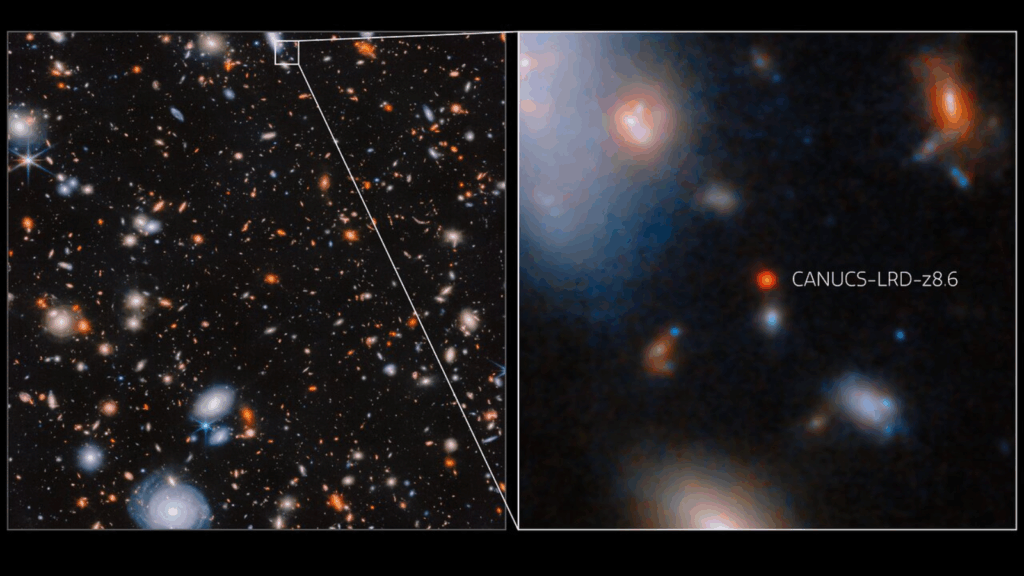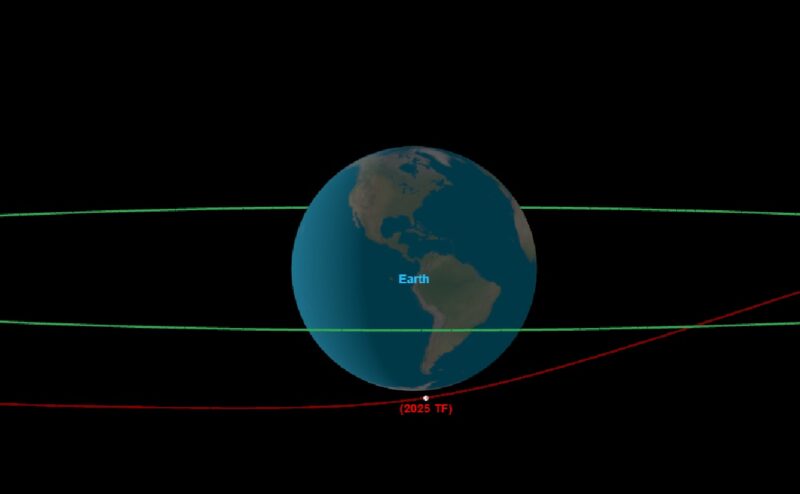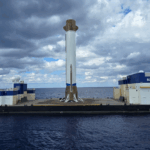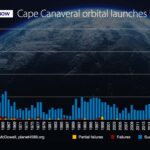Now Reading: The exoplanet revolution at 30: 1st alien world was found around a sun-like star three decades ago
-
01
The exoplanet revolution at 30: 1st alien world was found around a sun-like star three decades ago
The exoplanet revolution at 30: 1st alien world was found around a sun-like star three decades ago
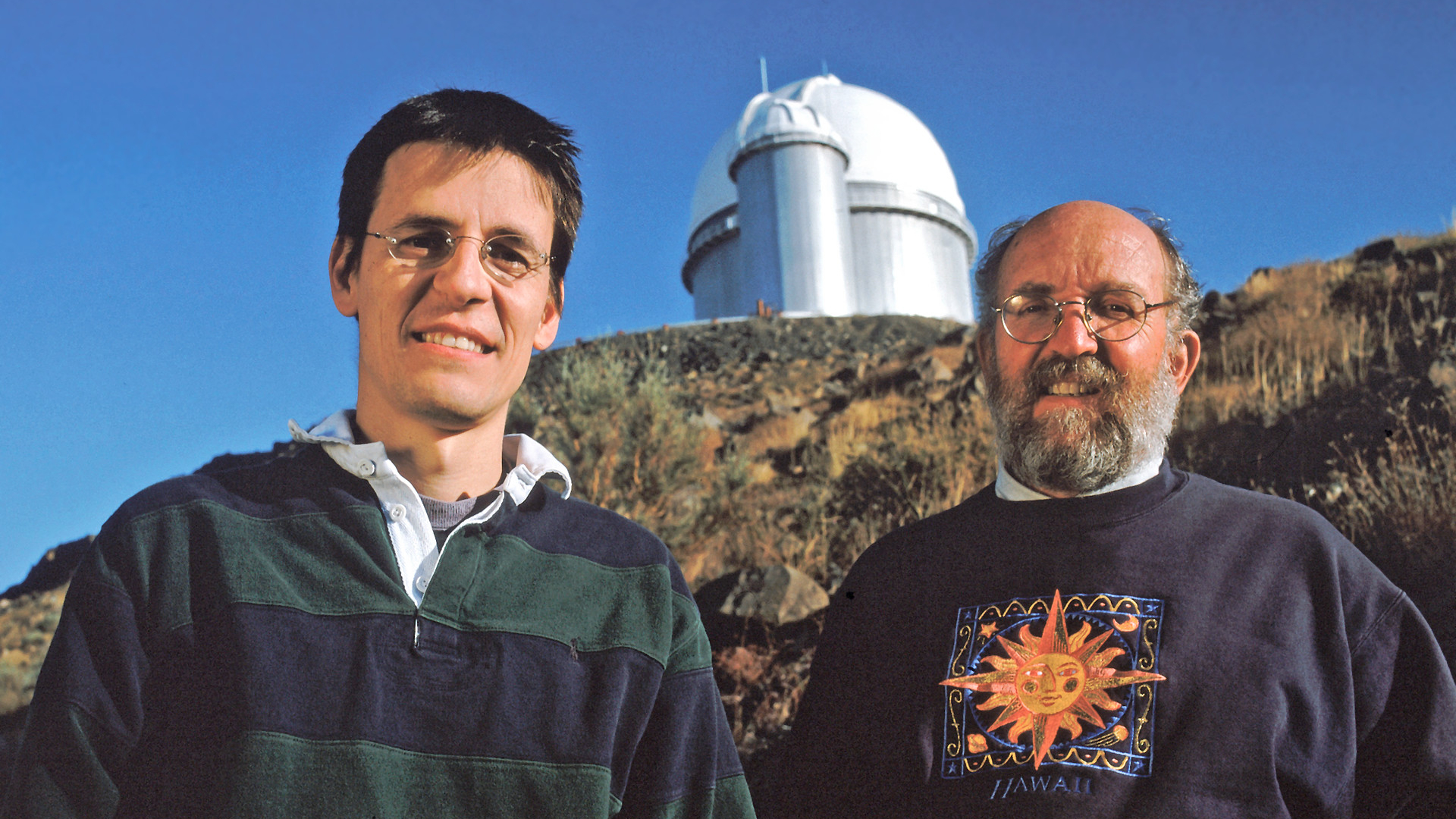
Thirty years ago, on Oct. 6, 1995, the very first exoplanet to be discovered around a sun-like star was revealed. Called 51 Pegasi b, it was a world like nothing we had ever seen before: a gas giant planet similar to Jupiter, but so close to its star that its year lasts just a little over four Earth days and its sky burns at 1,830 degrees Fahrenheit (1,000 degrees Celsius).
The discovery of 51 Pegasi b was a turning point in astronomical history. No longer were we confined to studying just the planets in our own solar system; there was an entire universe of planetary systems out there for us to explore.
“When the first exoplanet was discovered, I remember thinking that it was really cool, but also thinking, ‘Duh! Like, of course there are planets out there!'” said Amanda Hendrix, the director of the Planetary Science Institute in Arizona, in an interview with Space.com.
That first exoplanet proved to be the vanguard for an entire galaxy stuffed to the brim with planets. Today, the exoplanet count stands at more than 6,000 and is growing all the time. The statistics suggest that almost every star of the approximately 200 billion stars in our Milky Way galaxy has planets.
That means there are a lot of planets out there, but 51 Pegasi b was the first. Like most exoplanets, it was found indirectly. Astronomers Michel Mayor and Didier Queloz of the University of Geneva had been searching for planetary systems with ELODIE, a spectrograph on the 1.9-meter (6.2 feet) telescope at the Observatoire de Haute-Provence in France. ELODIE worked by being able to detect a star wobbling.
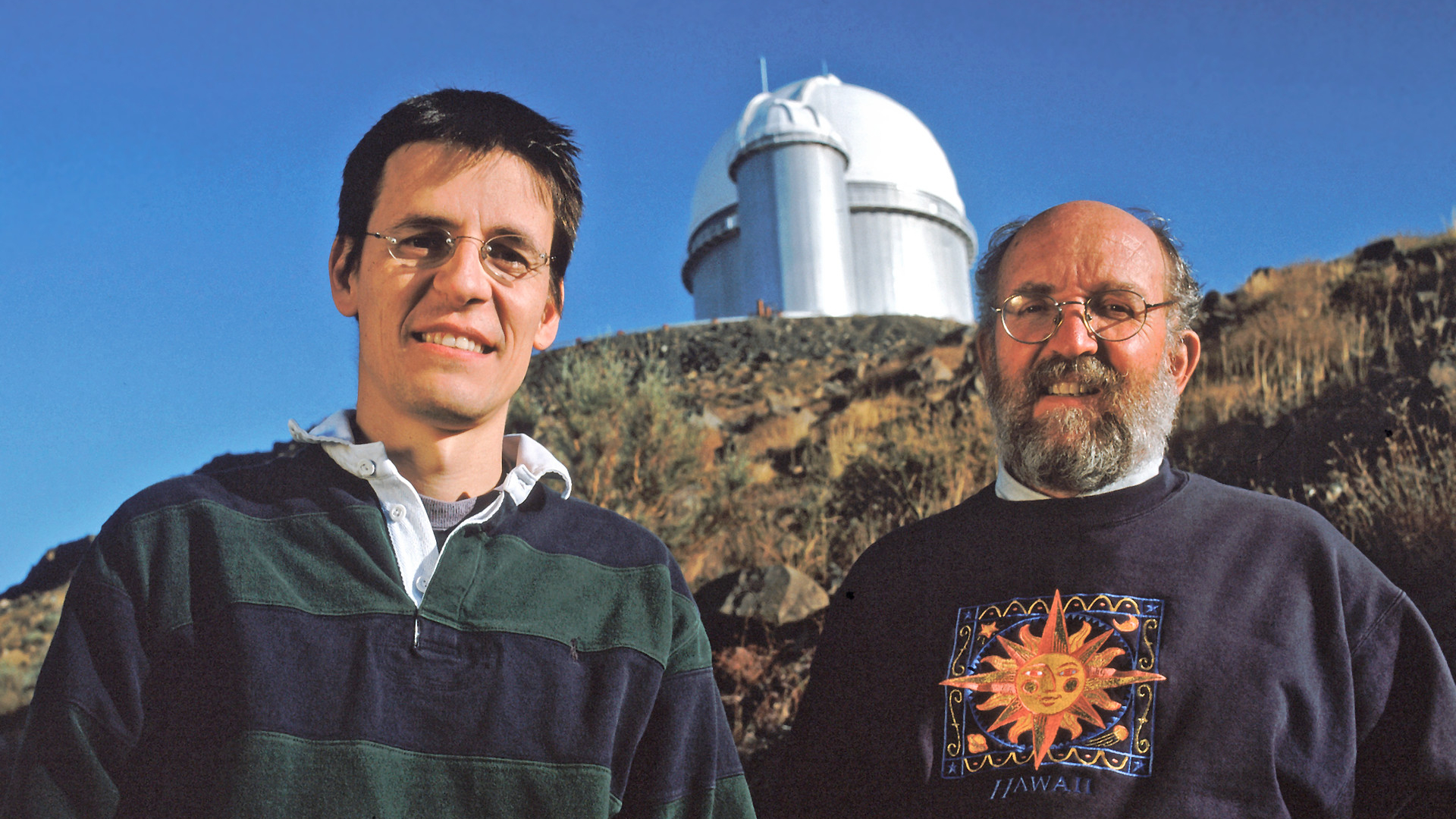
Why would a planet make a star wobble? Imagine a parent and child sitting on opposite ends of a long seesaw. The parent, being larger, has most of the mass, and the center of the combined mass of both parent and child is therefore much closer to the parent. That’s why, with parent and child at either end, the seesaw tips in the direction of the adult.
Suppose, though, that they want to make the seesaw balance horizontally. The parent would shift themselves closer to the pivot point, moving the center of mass closer to the pivot. Once the center of their combined mass falls onto the pivot, the seesaw balances.
This is, in effect, what we see in exoplanetary systems. Just as in the example of the seesaw, the star is located very close to the center of mass because it contains the vast majority of the mass in the system. Often, the center of mass is inside the star, but crucially it is offset and not at its center.
The planet doesn’t really orbit the star; it is orbiting the center of mass instead. And vice versa: The star also orbits the center of mass, so it appears to wobble around this point, and in doing so, it will periodically shift closer to us and then away from us. This movement is marginal, but it results in a Doppler shift in the star’s light — as the star swings in our direction, its light waves bunch up, shortening their wavelength, and when it swings away from us, the light waves are more stretched out. It’s the same effect as in the case of sound waves that change in pitch as they blare out from the siren of a passing emergency vehicle. The more massive the planet and the closer it is to its star, the stronger the shift.
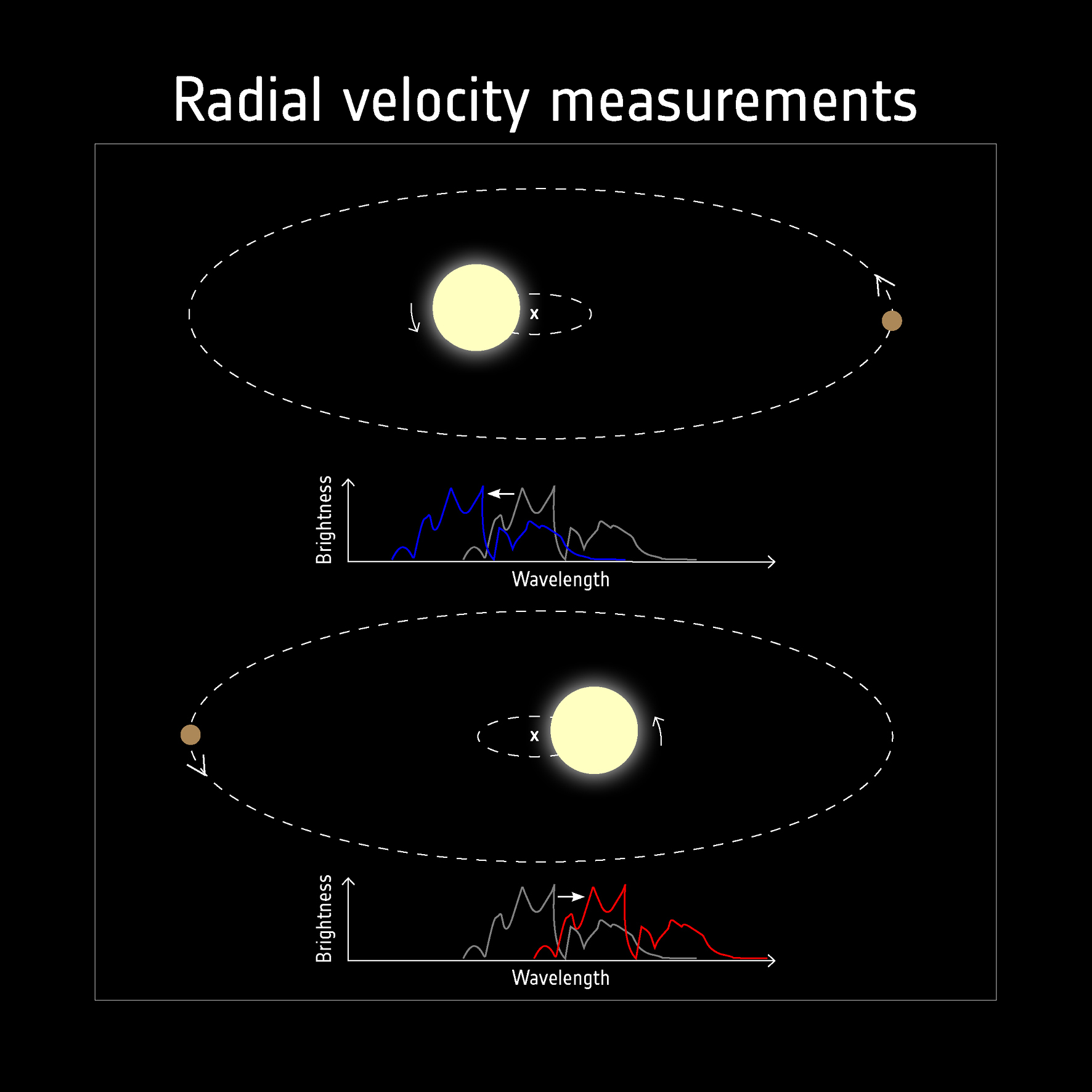
Mayor and Queloz discovered 51 Pegasi b by using ELODIE to measure the Doppler shift in its star’s light as it wobbled around the centre of mass between it and 51 Pegasi b. Astronomers call this technique the “radial velocity” method because it is measuring the velocity of the star toward and away from us as it wobbles around. Hundreds of planets have been found by this method since, and the existence of thousands more verified through it. So far, no direct image of 51 Pegasi b has been taken; the planet is too far away from Earth (50 light-years) and too close to its star to be seen by even our best telescopes.
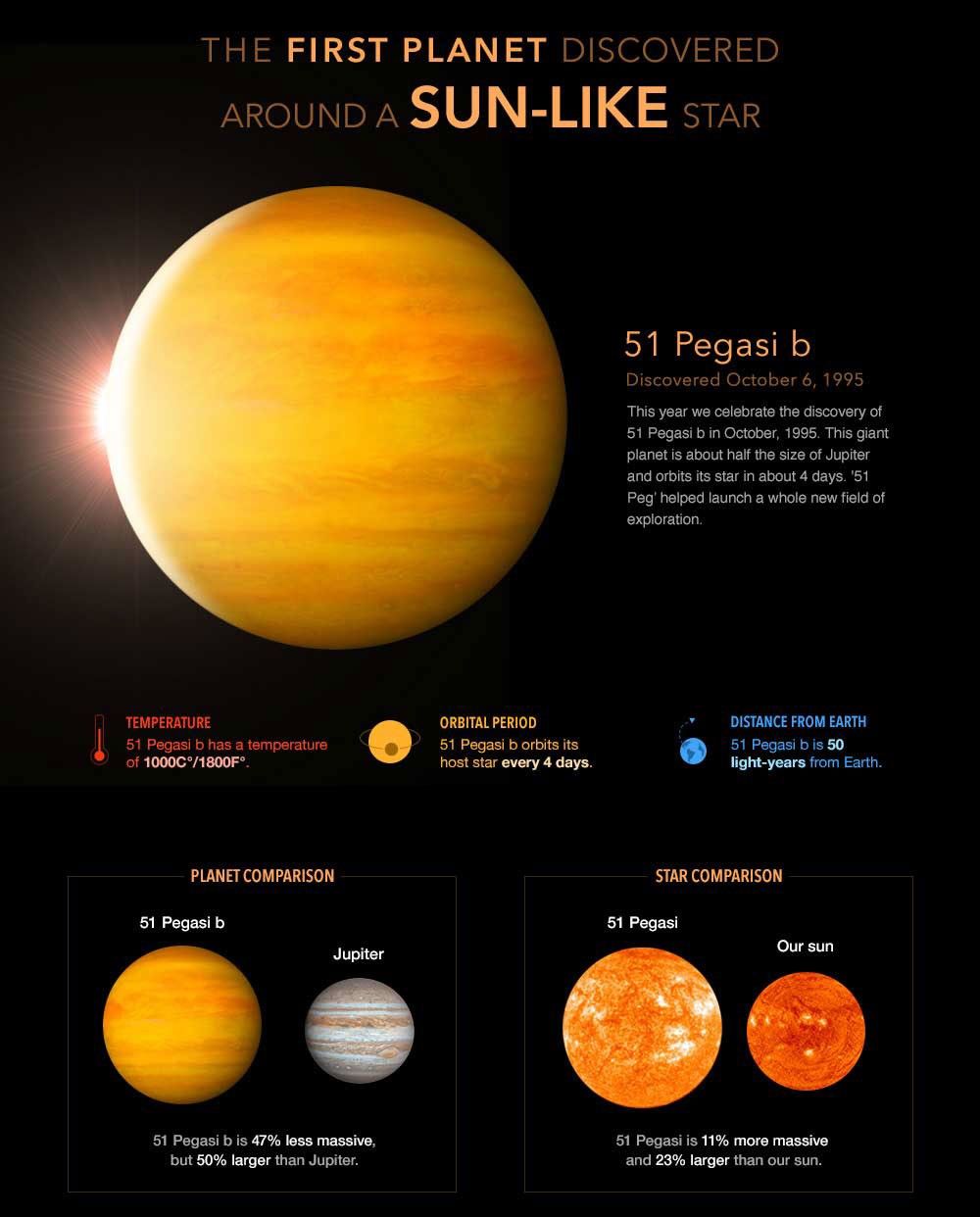
Yet there was a twist. Mayor and Queloz had been expecting to find planetary systems with architectures like that of our solar system, with the smaller rocky planets closer to their star and larger gaseous worlds farther away.
So it was a shock when the size of the Doppler shift suggested that 51 Pegasi b is a gas giant practically on the doorstep of its star. It’s a kind of planet that we now call a “hot Jupiter,” but at the time it left astronomers flummoxed as to how such a remarkable planet could exist. According to models of planetary formation, gas giants couldn’t form close to their star. It is a mystery that has since been solved: 51 Pegasi b and other hot Jupiter exoplanets formed farther from their star, but they then migrated toward the star to arrive in their current close orbit.
For Don Pollacco, who is the lead scientist on the European Space Agency‘s forthcoming planet-finding PLATO mission and a professor of astronomy at the University of Warwick in England, the discovery of 51 Pegasi b is an example of the dangers lurking in allowing our assumptions and scientific biases to blind us to reality.
“Trying to use our Earth and solar system as the example of what exoplanets should be like led to a big surprise,” he told Space.com. “The first planets that were discovered were nothing like the planets in our solar system!”
The discovery of the first exoplanet around a sun-like star did not happen by accident. It was a race that Mayor and Queloz won. In second place was a group led by Paul Butler and Geoff Marcy, then at the University of California, Berkeley, who despite not making the first discovery were able to confirm the existence of 51 Pegasi b, which was important for getting the astronomical community to accept such an extraordinary find. Then, in 1996, Butler and Marcy found 70 Virginis b, which was the second exoplanet to be discovered orbiting a sun-like star and was another hot Jupiter.
Although the nature of 51 Pegasi b blew astronomers’ minds, the fact that there were exoplanets at all was less shocking. Science fiction has, of course, been portraying exoplanets for decades, and in 1992, radio astronomers Dale Frail and Aleksander Wolszczan discovered planets orbiting a pulsar, the spinning remnant of a massive star that has gone supernova. However, many astronomers more or less dismiss pulsar planets — Pollacco describes them as “freakish” — because they are not thought to have formed like regular planets and are unlikely to be habitable.
For Hendrix, the key to finally discovering exoplanets was in developing instruments that were sensitive enough to detect them.
“It was just a matter of time before we found them,” said Hendrix. “I don’t want to diminish the excitement of it, but finding exoplanets really was expected; it was just a case of getting our technology up to speed to be able to find them.”
RELATED STORIES
For anybody under the age of 30, the concept of a universe in which we didn’t know of other planetary systems might seem, pardon the pun, an alien one. Back in the late 1990s, however, it was like seeing science fiction come to life. The discovery of 51 Pegasi b changed the shape of astronomy. The young researchers inspired by that discovery are, today, leading the charge in discovering and characterizing thousands of exoplanets with some of the most expensive telescopes and space missions ever constructed.
“I remember going to two conferences, one after the other, in 1998,” recalled Pollacco. “The first was on planetary nebulae, and I was the youngest person there. Straight afterwards I went to an exoplanet conference and I was the oldest person there! It was amazing, because in the planetary nebula conference there were about 60 people, and in the exoplanet one there were 300, so you could just see what was happening.”
The wind had changed, and soon exoplanet science would grow into a monster scientific field, one that captures the imagination of astronomers and the public alike. Many types of world have been found, from more hot Jupiters to “mini Neptunes” and tidally locked worlds, to lava planets, super-Earths and worlds that stand a chance of being habitable, although to date no planet like Earth has been identified. That is a discovery that still lies in our future, and if and when it happens, the discoverers will join the names of Mayor and Queloz in the annals of history.
Stay Informed With the Latest & Most Important News
Previous Post
Next Post
-
 012024 in Review: Highlights from NASA in Silicon Valley
012024 in Review: Highlights from NASA in Silicon Valley -
 02Panasonic Leica Summilux DG 15mm f/1.7 ASPH review
02Panasonic Leica Summilux DG 15mm f/1.7 ASPH review -
 03How New NASA, India Earth Satellite NISAR Will See Earth
03How New NASA, India Earth Satellite NISAR Will See Earth -
 04And Thus Begins A New Year For Life On Earth
04And Thus Begins A New Year For Life On Earth -
 05Astronomy Activation Ambassadors: A New Era
05Astronomy Activation Ambassadors: A New Era -
06SpaceX launch surge helps set new global launch record in 2024
-
 07Space Force plans new ‘Futures Command’ amid pressure to speed up modernization
07Space Force plans new ‘Futures Command’ amid pressure to speed up modernization













